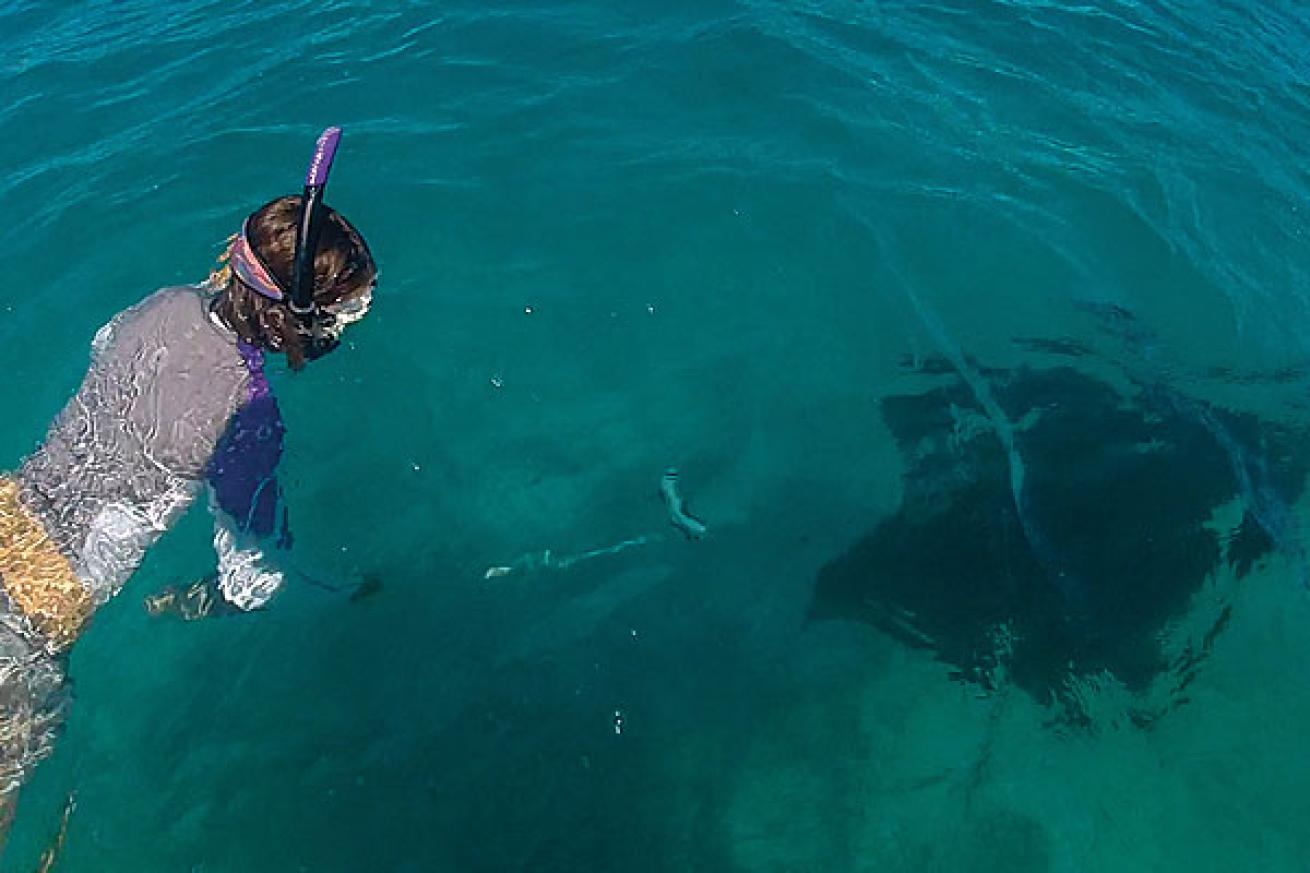A Day in the life of Ana Sofia Guerra, 2014 North American Rolex Scholar



Standing on the bench of the 16-foot skiff, I slowly steer the boat down the channel as my coworker on this trip, Robbie Schallert, and I keep our eyes focused on the shimmering surface of the water. Finally, I see it up ahead, the now familiar hint of a shadow - so subtle you could swear your brain was playing tricks on you. “I see one! 100 feet off the port bow,” I say to Robbie as I shift the engine into neutral and keep my eyes focused on the moving shadow. He quickly dons his mask, snorkel and fins, readies the tagging pole, and slides into the water. “Ready?” I ask. He tightly grabs hold of the forward dock line - “Ready,” comes the muffled response through the snorkel.
Shifting into gear, I creep the boat forward at a crawling pace. “I see her,” Robbie says through the snorkel, “turn starboard a little.” Finally, I see the clear silhouette of a manta ray gliding 15 feet underwater. I follow the manta at idle speed to avoid scaring her, slowly gaining on the peaceful giant until Robbie is positioned directly above her. “Neutral!” He calls out. Instantly, I shift the engine into neutral and respond, “neutral!” On cue, Robbie lets go of the dock line and follows the manta for a few seconds before he dives down. After what seems like an eternity, I see him pop up several feet away. “Got it!” Another tagged manta!
As a part of my year as the 2014 North American Rolex Scholar of the Our World-Underwater Scholarship Society, I spent three weeks on Palmyra Atoll tagging and identifying manta rays on a project led by Dr. Barbara Block from Stanford University. Dr. Block, recipient of the 2012 Rolex Award for Enterprise, is working to create a ‘Wired Ocean' using Iridium satellite linked acoustic receivers to connect the pelagic animals of the open ocean to the internet - all in real time!
Palmyra Atoll National Wildlife Refuge, located in the equatorial Northern Pacific, has one of the few remaining near-pristine reefs on our planet. Due to its historical remoteness, past status as a World War II military base, and its current protection by the U.S. Fish and Wildlife Service and The Nature Conservancy, Palmyra’s reefs have not endured nearly as much fishing pressure as any surrounding islands. In some ways, Palmyra is a window to the past – a view of what the ocean may have looked like before human impact.
Manta rays, considered “vulnerable,” by the IUCN Red List of Threatened Species (link), are found in large numbers on Palmyra Atoll. Using specialized acoustic tags that send distinct coded pings with individual IDs, we can detect the manta ray's presence through an acoustic receiver located in Palmyra’s channel - the atoll’s main transiting route in and out of the lagoon for marine wildlife. Our hard work yielded 20 acoustically tagged mantas and over 70 identified individuals! If you’re interested, all of the data will be live at the new Integrated Ocean Observing System Animal Telemetry Network (IOOS ATN) site should be ready for access in September 2014. This technology allows us to remotely monitor the manta’s movements in and out of the atoll and helps us further understand how manta rays use places like Palmyra Atoll. Only by understanding nature can we learn how to protect it.
Follow my blog to follow my year as the 2014 North American Rolex Scholar!
Click here to learn more about the Scholarship program, including how to apply for the 2015 Scholarships.






